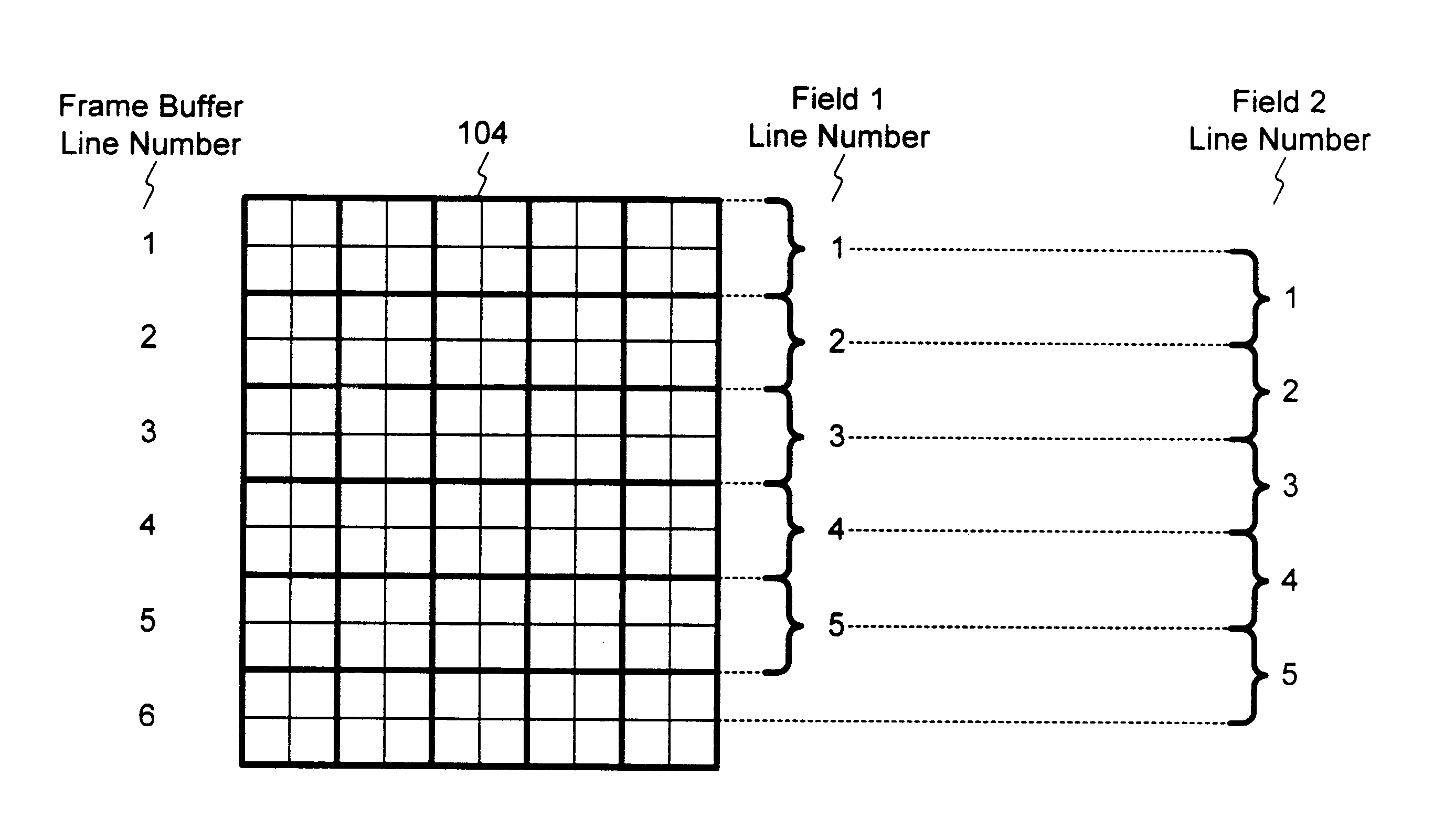Reducing fill and improving quality of interlaced displays using multi-sampling
- Summary
- Abstract
- Description
- Claims
- Application Information
AI Technical Summary
Benefits of technology
Problems solved by technology
Method used
Image
Examples
Embodiment Construction
Discussion
The present invention is directed towards a system method and computer program product for reducing fill and improving quality of interlaced displays using multi-samples. The present invention is described in terms of a software environment. Description in these terms is provided for convenience only. It is not intended that the present invention be limited to application in this example environment. In fact, after reading the following description, it will become apparent to the person skilled in the relevant art how to implement the invention in alternative environments known now or developed in the future.
Terminology
To more clearly delineate the present invention, an effort is made throughout the specification to adhere to the following term definitions as consistently as possible.
The term “frame” is used to refer to a single image in a sequence of images. A video clip consists of multiple frames.
The terms “interlacing” and “interlaced scanning” are used to refer to a v...
PUM
 Login to View More
Login to View More Abstract
Description
Claims
Application Information
 Login to View More
Login to View More - R&D
- Intellectual Property
- Life Sciences
- Materials
- Tech Scout
- Unparalleled Data Quality
- Higher Quality Content
- 60% Fewer Hallucinations
Browse by: Latest US Patents, China's latest patents, Technical Efficacy Thesaurus, Application Domain, Technology Topic, Popular Technical Reports.
© 2025 PatSnap. All rights reserved.Legal|Privacy policy|Modern Slavery Act Transparency Statement|Sitemap|About US| Contact US: help@patsnap.com



